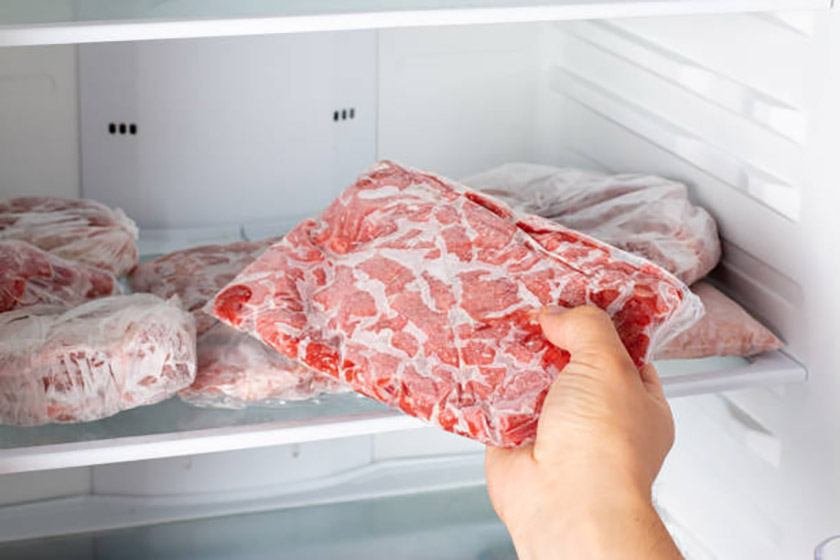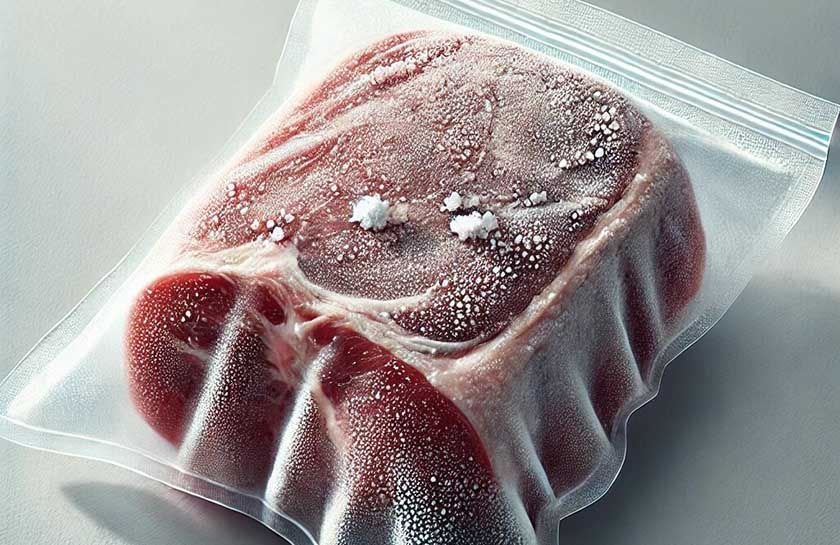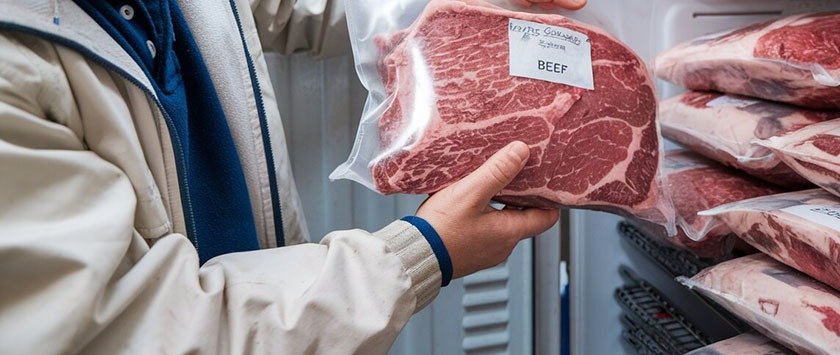Freezing meat is an effective method for preserving its freshness and flavor – however, it is crucial to execute the process correctly to prevent freezer burn and maintain overall quality.
This article explores the best way to freeze meat, providing guidance on selecting the right packaging and using proper wrapping techniques to ensure optimal preservation.
It also addresses the storage duration for various types of meat and provides recommendations for safe thawing practices. Furthermore, it presents effective strategies to mitigate freezer burn, ensuring that the meat remains palatable for an extended period.
What is the Best Way to Freeze Meat?
Freezing meat is a vital technique for home cooks aiming to extend the shelf life of various types of meat, including beef, chicken, pork, fish, and game meat, while ensuring optimal flavor retention and texture preservation.
A thorough understanding of effective meat freezing methods not only enhances food freshness but also minimizes waste, making it an essential component of efficient meal planning and food storage.
By employing proper packaging techniques, such as vacuum sealing, utilizing freezer bags, or using airtight containers, and mastering temperature control, individuals can achieve effective meat preservation and prevent freezer burn.
Choose the Right Packaging
Selecting the appropriate packaging for freezing meat is essential to prevent moisture loss and freezer burn during storage, thereby ensuring optimal food quality and flavor retention.
There are various options available, each possessing unique advantages suited to different types of meat.
The best way to freeze meat, especially cuts like beef and poultry, is through vacuum sealing, which creates an airtight environment and extends shelf life by minimizing exposure to air.
Freezer bags serve as a versatile option, ideal for ground meats and smaller portions, as they are user-friendly and can be conveniently labeled.
Airtight containers are suitable for larger cuts, ensuring protection from moisture and contaminants while facilitating easy stacking in the freezer.
Utilizing high-quality materials for packaging is imperative – not only does it help maintain the meat’s safety and freshness, but it also enhances the overall culinary experience when it is time to prepare the meal.
Wrap Meat Properly
Properly wrapping meat is crucial to minimizing air exposure, which can lead to freezer burn and the deterioration of both flavor and texture.
To achieve optimal results, it is advisable to explore various wrapping techniques. For instance, butcher paper is a favored option among professionals, as it provides breathability while still offering protection against moisture loss.
Aluminum foil delivers a snug fit and robust protection, making it an excellent choice for extended storage periods. For the utmost freshness, vacuum bags are preferable, as they completely eliminate air, thereby preventing oxidation.
Additionally, employing techniques such as brining or marinating prior to freezing can significantly enhance flavor. This allows the meat to absorb moisture and seasoning, resulting in a more flavorful dish when it is time for preparation.
Label and Date the Meat
Labeling and dating meat prior to freezing is an essential aspect of effective food storage that helps maintain food quality and ensures proper rotation, thereby minimizing waste.
This practice not only assists in tracking the duration of storage but also enhances freshness, preventing the consumption of expired products.
By clearly indicating the type of meat, the date of freezing, and appropriate defrosting methods, individuals can streamline their meal preparation process.
Utilizing reusable containers further promotes sustainability by reducing reliance on single-use products. Incorporating freezer-friendly recipes is the best way to freeze meat efficiently, fostering a more organized cooking approach while minimizing food waste and maximizing convenience.
Place Meat in the Freezer Correctly
 Proper placement of meat in the freezer is crucial for maximizing efficiency and maintaining optimal temperature control, which is essential for food safety and quality.
Proper placement of meat in the freezer is crucial for maximizing efficiency and maintaining optimal temperature control, which is essential for food safety and quality.
Organizing freezer compartments not only facilitates effective cold air circulation but also prevents dangerous temperature fluctuations that could compromise the integrity of the food.
When determining the optimal placement of various cuts, larger meats, such as roasts, should be stored at the back, where temperatures are typically the coldest, while smaller cuts can be positioned towards the front for easy access.
By categorizing meats – such as ground beef, poultry, and steak – into designated zones, individuals can ensure efficient thawing and streamline cooking processes when retrieving items from the freezer.
Additionally, it is important to regularly check and organize the freezer to avoid overloading, as this can disrupt airflow and hinder its overall performance.
How Long Can Meat Be Stored in the Freezer?
Understanding the appropriate storage duration for various types of meat in the freezer is essential for maintaining meat quality and ensuring the safety of food consumption, as specified by USDA recommendations.
Ground Meat
Ground meat can be stored in the freezer for an extended period, typically up to 3 to 4 months, provided it is packaged appropriately to prevent freezer burn.
The specific storage duration may vary depending on the type of meat – for instance, beef generally remains safe for the longest duration, whereas poultry and pork should ideally be consumed within 3 months.
The best way to freeze meat is to ensure that each package is vacuum-sealed or tightly wrapped, with clear labels indicating the date of freezing to maintain safety and freshness.
This practice not only aids in preventing freezer burn but also ensures that the meat is utilized within its optimal timeframe.
Implementing portion control when freezing ground meat is highly advisable. By dividing it into meal-sized servings, meal preparation becomes more efficient, facilitating quick access to the appropriate amount, thereby minimizing waste and promoting a balanced diet.
Steaks and Chops
When properly frozen, steaks and chops can maintain their quality for a period of 6 to 12 months, contingent upon the specific cut and storage method employed.
To ensure that these cuts preserve their flavor and texture, it is essential to utilize high-quality packaging materials, such as vacuum-sealed bags or heavy-duty freezer wrap.
These materials provide protection against freezer burn and help to seal in moisture, thereby preserving the juicy characteristics of each piece.
Maintaining an organized freezer is of utmost importance. By labeling and categorizing various meat types, it becomes significantly easier to locate specific items, thereby enhancing the efficiency and enjoyment of meal preparation.
A well-organized freezer not only saves time but also facilitates monitoring of storage duration, enabling the implementation of a rotation system that promotes optimal freshness.
Whole Poultry
Whole poultry can be stored in the freezer for up to one year, provided it is properly wrapped and sealed to prevent freezer burn and maintain food quality.
To ensure optimal preservation, it is highly recommended to use moisture-proof and airtight materials such as heavy-duty aluminum foil, freezer paper, or specialized freezer bags.
These wrapping techniques not only protect against freezer burn but also help retain the meat’s original flavor and texture.
It is essential to label each package with the date of freezing and its contents, facilitating easy identification and tracking of storage duration.
For thawing, the safest methods include defrosting in the refrigerator or submerging the poultry in cold water, as these approaches minimize bacterial growth.
Given that meat safety can be compromised after prolonged storage, adherence to these practices will effectively maintain both the quality and safety of whole poultry.
Sausages and Hot Dogs
Sausages and hot dogs can typically be stored in the freezer for approximately one to two months. While they may remain safe for consumption beyond this timeframe, the quality may begin to deteriorate.
The significance of proper packaging cannot be overstated, as it is critical in preserving both the flavor and texture of these popular meats.
The best way to freeze meat is by utilizing vacuum sealing or airtight containers, as these methods help prevent freezer burn and retain moisture, ensuring that each bite remains juicy and flavorful.
To optimize freshness and maintain quality, it is essential to practice food rotation within the freezer. This technique ensures that older items are utilized first, thereby minimizing the risk of spoilage.
In terms of meal preparation, frozen sausages and hot dogs can be conveniently grilled, sautéed, or incorporated into casseroles and soups, making them a versatile choice for quick and satisfying dishes.
What Are Some Tips for Thawing Frozen Meat?
Utilizing appropriate thawing techniques is essential for ensuring meat safety and preserving the quality of thawed meat, thereby preventing the proliferation of bacteria during the thawing process.
Thaw in the Refrigerator
Thawing meat in the refrigerator is recognized as one of the safest defrosting techniques, as it maintains a consistent and safe temperature throughout the process.
This method significantly reduces the risk of bacterial growth, which can occur when meat is left at room temperature for extended periods.
Refrigerator thawing also helps to preserve the meat’s texture and quality, allowing it to retain its moisture and flavor, in contrast to other methods that may result in dry or uneven thawing.
Regarding timing, larger cuts of meat, such as whole turkeys, typically require approximately 24 hours for every five pounds, while chicken breasts generally need between 12 to 24 hours.
Ground meats and smaller cuts, such as steak, usually thaw within 8 to 12 hours, providing a practical approach to meal preparation while ensuring food safety.
Use Cold Water to Thaw
Using cold water to thaw meat is a more expedient method compared to thawing in a refrigerator – however, it necessitates careful monitoring to ensure adherence to safe thawing practices.
This technique, used in the best way to freeze meat, leverages the principles of heat transfer, allowing the frozen meat to gradually warm while staying within a safe temperature range.
It is imperative for the cook to change the water every 30 minutes – this action not only helps maintain a cold environment but also mitigates the risk of bacterial growth that can occur if food is left at room temperature for an extended period.
For smaller cuts, such as chicken breasts or steaks, the recommended thawing time is approximately 1 to 2 hours, while larger items, such as whole turkeys, may require up to 6 hours. Understanding these time frames is essential for achieving safe and efficient thawing.
Use the Microwave to Thaw
Microwave thawing is the most expedient defrosting method – however, it necessitates careful attention to prevent partial cooking of the meat, which could compromise its quality.
This process can be challenging, as uneven thawing may result in hot spots that can facilitate the growth of harmful bacteria. To ensure both safety and quality, it is advisable to utilize the microwave’s defrost setting and consistently monitor the meat’s temperature.
While microwave thawing offers convenience, certain cooking methods allow for the preparation of frozen meats directly, such as grilling or slow cooking.
These techniques not only conserve time but also preserve the flavors and textures of the meat, thereby making meal preparation more efficient and manageable for individuals with busy schedules.
How Can Freezer Burn Be Prevented?
Preventing freezer burn is crucial for preserving the quality and flavor of frozen meat. This can be accomplished through a combination of appropriate packaging techniques and effective temperature control measures.
Use a Vacuum Sealer
 Utilizing a vacuum sealer is one of the most effective methods for preventing freezer burn, as it eliminates air exposure that leads to moisture loss in stored meat.
Utilizing a vacuum sealer is one of the most effective methods for preventing freezer burn, as it eliminates air exposure that leads to moisture loss in stored meat.
By strategically removing air from the packaging, the vacuum sealing process creates a tight seal around various types of meat, such as beef, chicken, and fish.
This not only preserves their natural flavors but also safeguards them from spoilage by inhibiting the growth of bacteria and mold.
For optimal results, it is essential to ensure that the meat is properly prepared by trimming excess fat and portioning it into appropriate sizes.
Employing a high-quality vacuum sealer can significantly enhance the longevity of stored meat, facilitating long-term storage without compromising taste or texture.
The advantages of this method are evident not only in the freshness of meals but also in the convenience of meal preparation, making it a preferred technique in home kitchens.
Keep the Freezer at the Right Temperature
Maintaining the freezer at an optimal temperature, ideally at 0°F (-18°C) or lower, is essential for food safety and for preventing the occurrence of freezer burn.
Regular temperature assessments are critical for preserving the overall quality and longevity of frozen foods.
Fluctuations in temperature can lead to thawing and refreezing, which may negatively impact the texture and flavor of your meat. That’s why the best way to freeze meat is to closely monitor these conditions.
To ensure optimal freezer performance, it is advisable to maintain an organized appliance. Placing items in designated zones can facilitate consistent temperatures.
Additionally, clearly labeling containers and implementing a system for stock rotation – using older items first – can help minimize waste and ensure that foods retain their quality when it is time for meal preparation.
Avoid Overcrowding the Freezer
Avoiding overcrowding in the freezer is essential to ensure proper air circulation, which helps maintain a consistent temperature and prevents freezer burn.
When the freezer is excessively packed, it can lead to uneven cooling, adversely affecting both the quality and safety of the food over time. Proper organization is crucial to maximize efficiency and ensure easy access to frozen items.
To achieve this, it is advisable to group similar items together and utilize clear bins or labels for easy identification.
This method not only streamlines meal preparation but also promotes the use of older products first, thereby reducing waste and enhancing overall food safety.
By implementing these strategies, meal planning can become significantly more efficient while preserving the integrity of each item.
Use Quality Meat
Utilizing high-quality meat prior to freezing is essential for optimal flavor retention and texture preservation, thereby ensuring a satisfying culinary experience upon cooking.
When selecting premium cuts from reputable suppliers, the meat retains its natural juices and integrity, resulting in a more enjoyable dining experience.
Inferior quality meats, on the other hand, may be prone to freezer burn or texture deterioration, which can negatively impact the overall taste.
For the best way to freeze meat, it’s important to select higher-quality cuts and store them properly to avoid these issues.
By prioritizing quality when choosing meat, individuals not only enhance the flavors in their dishes but also contribute to healthier meal options.
Reputable suppliers typically adhere to better sourcing practices, which can lead to superior quality meats and ethically raised animals, thereby enriching the overall culinary experience. Scroll to the FAQ section at the end for additional insights.

